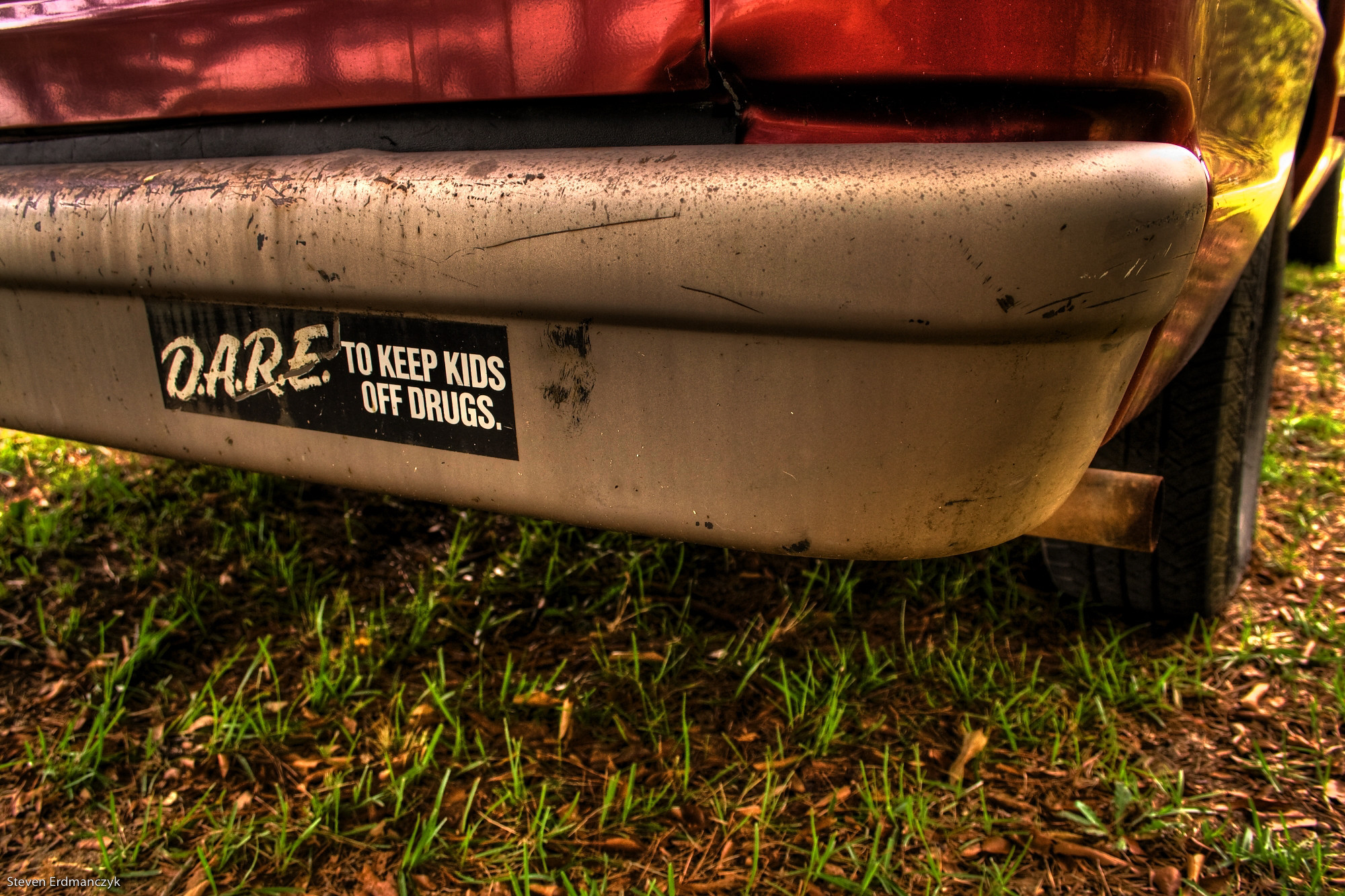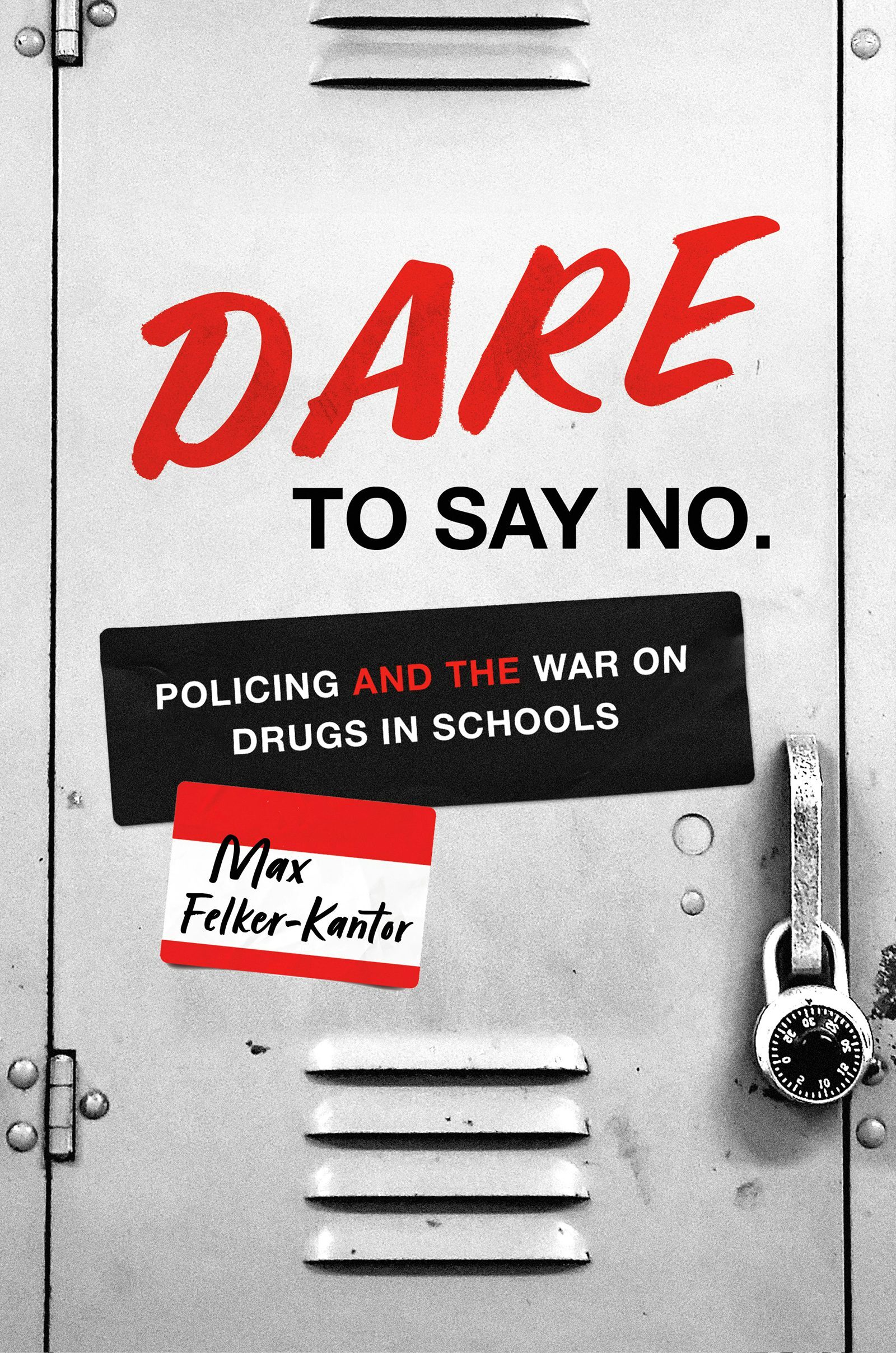Greg Boles, dressed in a neatly pressed LAPD uniform, entered a sixth-grade classroom in Los Angeles to teach his weekly DARE (Drug Abuse Resistance Education) lesson. It was the program’s third year. A multiracial group of students sat with their name tags on tables, watching intently as Officer Boles began his presentation. “The Question Box,” he announced, shaking the notorious box where students could submit questions, concerns, and tips about people they knew who used drugs. He reached in, pulled out an anonymous note, and read it: “Have you ever convinced a drug user to stop?” Boles responded out loud so the students could hear him: “I like to say that I have. I hope that I have.” Boles followed with a lesson about peer pressure and the different ways to say no to their friends. The students enthusiastically raised their hands, answered questions, and kept their eyes trained on their police officer instructor for the next hour. As with so many other DARE officers, Boles was the star of the show; he had clearly succeeded in developing a close rapport with these students.
While the presence of police in schools was not new when the LAPD and Los Angeles Unified School District (LAUSD) established DARE in 1983, the program integrated police officers such as Boles into schools in more invasive and innovative ways than in the past. Instead of serving a law enforcement function, however, DARE program police officers would serve as teachers, friends, and mentors. Cops, in short, became a normal part of the daily operation of schools, both as educators and (at least in hopes of the DARE program’s designers) as someone students would trust to tell about their troubles at home or with friends and family who used drugs.
Many readers likely think of DARE and police officers in schools as part of the notorious school-to-prison pipeline (SPP) framework. In contrast, in my new book, DARE to Say NO: Policing and the War on Drugs in Schools, I develop a framing of a school–police nexus that better explains the reciprocal and cooperative relationship that developed between the police and schools through DARE. It shows how DARE’s use of police officers as teachers coopted the educative function of schools to advance the police mission. Yet, for all the effort to humanize the police, DARE officers never shed their commitment to either law and order or zero tolerance of drug use. They were, after all, still police.
One of the most devastating effects of this effort to make police into friends, mentors, and role models was the message students took from the program to trust police officers—and to report when they learned of parents or friends who used drugs. For many students, it led to the arrest and potential incarceration of family, friends, and loved ones for doing what they had been told: to recognize the signs of drug use and to report it to the police.
Before getting to the punitive consequences of DARE’s snitching message, let’s first turn to why the DARE program relied on police officers as teachers in the first place, and how DARE’s messaging turned students into the eyes and ears of the police.
The LAPD and LAUSD looked to police officers because of their supposed firsthand knowledge of the negative consequences of drug use. DARE officers were described as “patrol-hardened, veteran police officers” who would command respect from youth and “effectively shore up the classroom teacher’s anti-drug education.” Street experience was key to making a good DARE officer. “Their years of direct experience with the ruined lives and street crimes caused by substance abuse gives them unmatched credibility,” DARE’s promotional material claimed. Program officials not only looked for veterans of the force who had street experience but also those with a personality suitable to teaching and who had “the ability to project a good police image.” With a mix of street experience and a positive police image, the DARE officer embodied the punitive and preventive impulses of the drug war at the same time.
Police officers and educators believed that elementary school students in the 1980s were so aware of drugs that teachers were out of their depth in teaching drug prevention. Instead, police officers were the only option for changing student attitudes toward drug use. “Fifth- and sixth-graders in our society today, they know more about this whole (drug) issue than the vast majority of the teachers do,” LAPD chief of police Daryl Gates argued in 1985. “So the teachers are not in a position to do it. It’s the police officers who are.” This rationale enabled the integration of police officers into the daily operation of schools—first in Los Angeles, and then across the country.
More from our decarceral brainstorm
Every week, Inquest aims to bring you insights from people thinking through and working for a world without mass incarceration.
Sign up for our newsletter for the latest.
Newsletter
Given such attention to officer selection, DARE’s police–school partnership had less to do with preventing drug use per se than it did with reimagining the role of the police officer and changing the perception of the police among youth. “DARE officers give a different face of law enforcement,” DARE America executive director and former LAPD deputy chief Glenn Levant explained. “A child’s first experience with a uniformed police officer is in a friendly, helpful way. . . . You have to have programs like DARE in place so police aren’t viewed as an occupying army.” Such references to the police as an occupying army likely had little resonance in predominantly white schools but would have played into the deep roots of over-policing in communities of color, which had produced the very distrust and antagonism toward the police that DARE hoped to alleviate.
To present a “friendly” image, officers wore their uniforms, but not their weapons, while on school campuses. They were not to engage in enforcement activities “except in case of an emergency.” Administrators emphasized that the prevention role of the DARE officer was, at least in their minds, separate from the enforcement and supply reduction elements of the drug war. “Experience has demonstrated that in order to be effective in that role and to maintain open communication,” DARE staff concluded, “the officers’ [sic] functions must be divorced from that of law enforcement.” In theory, this approach narrowed the police function to one of prevention. Positioning DARE officers as teachers ultimately aimed to humanize officers while reminding youth they were representatives of law enforcement whose authority was not to be questioned. In practice, DARE further integrated the police and the law-and-order message into schools.
To reinforce the message of the friendly officer, DARE officers stayed on school campuses for lunch hours, recesses, and extracurricular activities. Officers served as coaches, including for a DARE Track Club and a football team. Such activities aimed to transform how youth viewed the police. “It is a unique approach to have policemen doing this kind of thing on campuses, but this seems to have helped tremendously,” DARE administrator Sgt. Frank Whitman explained. “The policeman is seen as somebody to be feared, and we want to show kids that the policeman can be their friend, sort of an extension of the old ‘Policeman Bill’ concept. The kids can come up to the officer during lunch, ask him about anything. Touch his badge and his name tag.”
Teachers and principals affirmed such views. Norbert White, principal of the Seventh Street School in San Pedro, for instance, commented: “He [the DARE officer] tries to become (the students’) friend and get to know them. He does individual counseling and he also counsels with the teachers and myself.” More importantly, students were “getting to know the officer as an individual and human being.”
Many students seemed to adore their DARE officers. Photographs showed smiling students with their DARE officers both inside and outside the classroom. Oftentimes, students wrote about their experiences with officers in their “DARE Essays”—standard format essays with a common pro-DARE message, sometimes published in newspapers across the country. As one Ohio student wrote after completing DARE in 2000: “D.A.R.E. means a lot to me. I like seeing my D.A.R.E. officer’s happy smiling face every Wednesday. . . . I think D.A.R.E. is a really good program.” Students in Sioux City, Iowa, variously wrote: “I believe D.A.R.E. helps people think of themselves as special”; “Whenever I see my plaque or wear my T-shirt, I’ll think of all the great and fun times I had in D.A.R.E”; “This year when I was told that we would be having D.A.R.E., I figured that it would be some officer coming into our classroom and just saying don’t do drugs over and over again. Actually, it was GREAT.” While such sentiment was not representative of all DARE students (some students made fun of the program, saw it as a waste of time, or even smoked marijuana while wearing a DARE T-shirt), administrators used these anecdotes to showcase the program’s perceived ability to reorient student attitudes toward the police.
Developing rapport with students aimed to encourage children to cooperate with police officers as legitimate symbols of authority who could be trusted with intimate information about themselves and their families. Students learned the “Three R’s”: “Recognize, Resist, and Report,” which led to “students coming forth with information requiring intervention.”
To deal with such information, DARE officers and school administrators developed a communication network to “ensure that enforcement is taken when necessary without direct involvement of the classroom officer.” This network connected the DARE officer to a range of other law enforcement entities, including the School Police Department, LAPD’s Juvenile Division, and LAPD’s Juvenile Narcotics Section, who were empowered to undertake enforcement measures in and around schools. In 1984, for instance, information acquired from students in Los Angeles DARE classrooms that was relayed to non-DARE officers resulted in twenty-seven investigations for crimes ranging from drug abuse to child abuse as well as two arrests for the use of alcohol, twelve arrests for possession of marijuana, and five arrests for use of marijuana.
Unsurprisingly, students occasionally reported on their own parents’ or friends’ drug use, leading to arrest and detention. In Caroline County, Maryland, for instance, a student told her DARE officer that her parents grew marijuana at home, which led to the student’s parents being arrested and spending thirty days in jail. Students in Boston took the same message from their DARE lesson, calling the police and meeting the officers with DARE diplomas in hand, a sure sign that students were inspired by the program to report on their own parents. Other instances of kids acting as informants on their parents included one from Colorado, who proudly told a 911 operator, “I’m a DARE kid,” when reporting he found marijuana on a bookshelf in his house.
If these episodes were a small sample size compared to the millions of students who received the DARE curriculum, it certainly seemed that many believed their role to be one of aiding the police in their mission to stop drug use at all costs. DARE America representatives defended the program, stating that attention to these high-profile cases were “making a mountain out of a molehill.” The effort to humanize the police and make them into trusted friends and mentors enabled cops to become part of kids’ lives in ways that led to punitive consequences. Whether those consequences were intended or not, it clearly encouraged kids to snitch on their parents without understanding the potentially devastating effects on their lives.
With DARE’s spread nationwide, episodes of students turning over parents to the police, often for marijuana use, led to growing concerns that DARE was merely a form of police surveillance. In some cases, parents responded with remorse, reaffirming the message of personal responsibility that they had failed to uphold. “We are to blame for getting Crystal into this mess,” the parents of one of the more high-profile cases of a snitching incidence recalled. “This would never have happened if we never smoked hemp.” Although these parents clearly exhibited regret about their drug use, kids often learned a different lesson, commenting that they would never tell police again. In hopes of making police officers into people kids could trust, the DARE program in this instance clearly backfired.
Stories of kids turning in their parents persisted in the twenty-first century. In 2010, following a DARE lesson on the perceived negative effects of using marijuana, a North Carolina DARE student brought one of his parents’ joints to school to prove that his parents used marijuana, leading the police to arrest the parents while the child and his sibling were removed from the home by child protective services. “Even if it’s happening in their own home with their own parents, they understand that’s a dangerous situation because of what we’re teaching them,” stated an officer familiar with the case. “That’s what they’re told to do, to make us aware.”
DARE deployed cops as teachers in ways that enabled it to become a household name and worked to humanize the police officer. In doing so, the program integrated the police into the lives of children, their schools, and their families, solidifying a school–police nexus that incorporated students and schools into the punitive drug war.
Despite law enforcement’s best efforts to assert that the DARE officer was not on school campuses for security or enforcement of drug laws, in practice the DARE officer blurred the line between prevention and punishment. But as the stories recounted above suggest, that separation was never as distinct as proponents believed. DARE, quite simply, was never divorced from the violent work of policing and operated as a form of copaganda as much as it did a drug prevention program. By attempting to humanize police officers, DARE meant to counteract the image of aggressive policing that characterized the war on drugs. In the process, by focusing on teaching kids to say no and to promote positive self-esteem, it ignored the deeper structural roots of drug use and, in turn, alternative solutions to the drug war.
Adapted from DARE to Say No: Policing and the War on Drugs in Schools by Max Felker-Kantor. Copyright © 2024 by Max Felker-Kantor. Used by permission of the University of North Carolina Press.
Image: Steven Erdmanczyk Jr/Flickr/Inquest


